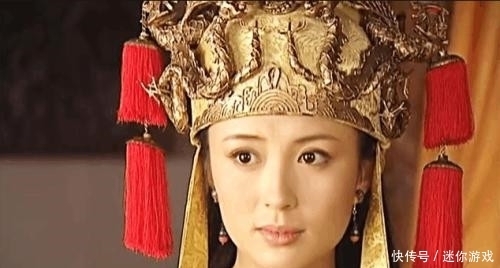гҖҢ жӯ»дәЎжҳҜж°‘дё»зҡ„ гҖҚ( дёү )
ж–Үз« жҸ’еӣҫ
A female saint standing with a cavalier and surrounded by angels and skeletons Artist-Jose? Guadalupe Posada (Mexican, 1851вҖ“1913) вҖ“ Date-ca 1890вҖ“1910
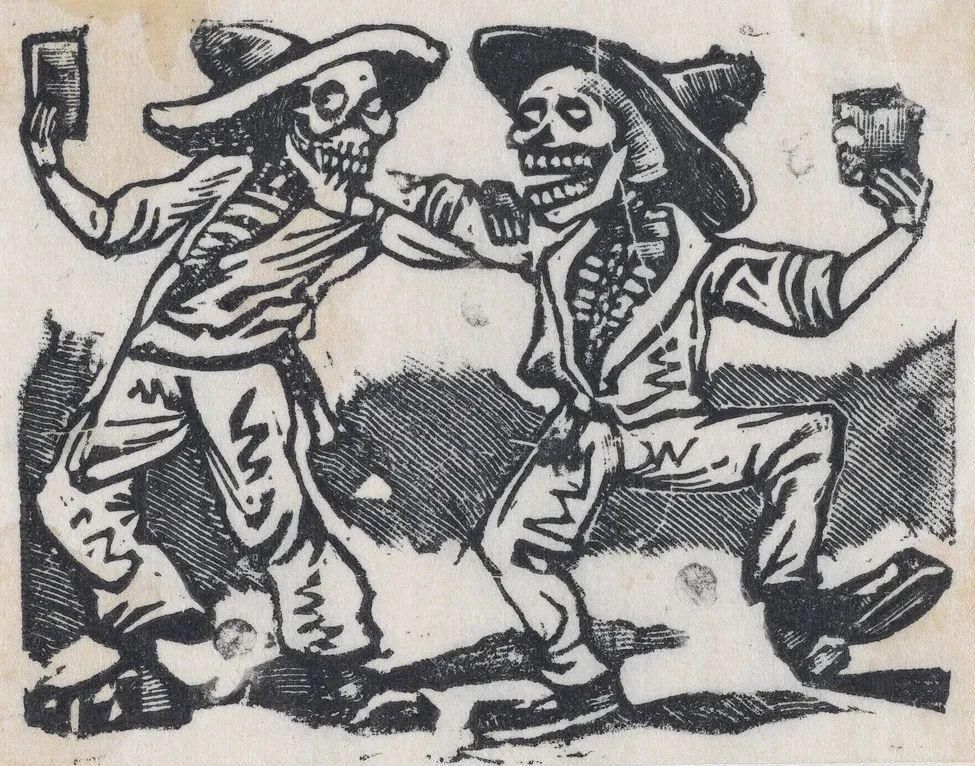
ж–Үз« жҸ’еӣҫ
Two male skeletons in suits dancing (vignette for the feast of the dead) Artist-Jose? Guadalupe Posada (Mexican, 1851вҖ“1913) Date-ca. 1890вҖ“1910 вҖ“ Medium-Metal-plate engraving
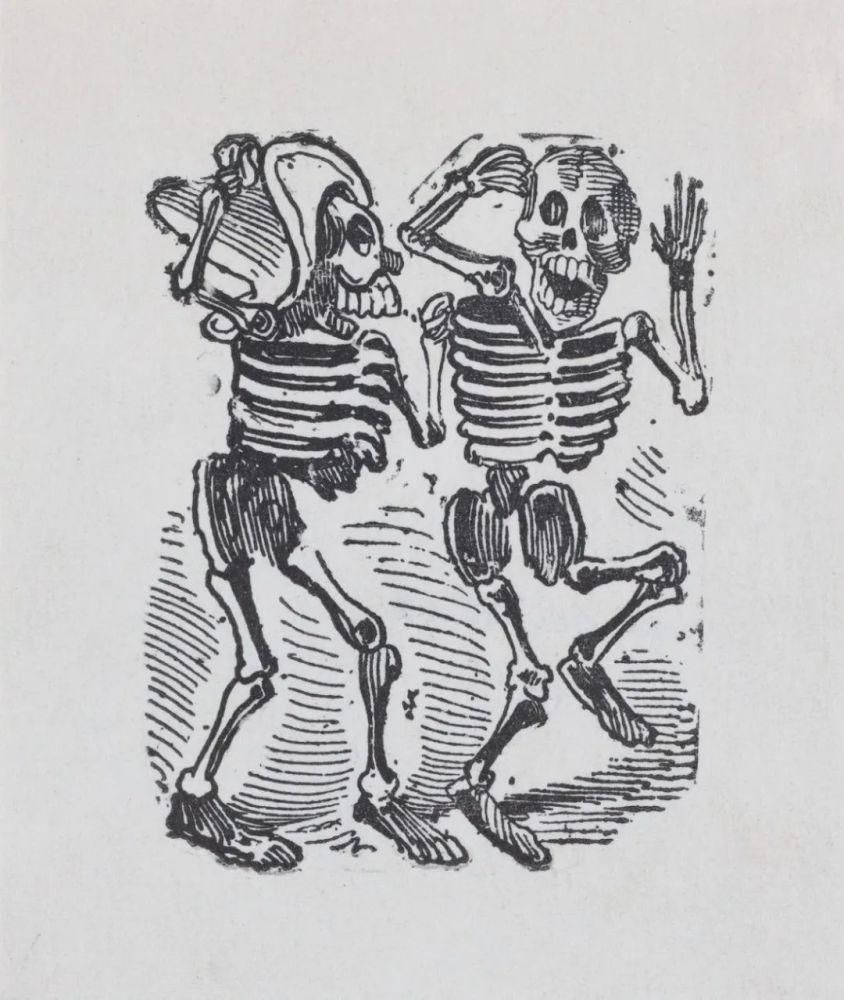
ж–Үз« жҸ’еӣҫ
Two skeletons smiling and dancing Artist-Jose? Guadalupe Posada (Mexican, 1851вҖ“1913) ) Date-ca. 1880вҖ“1910
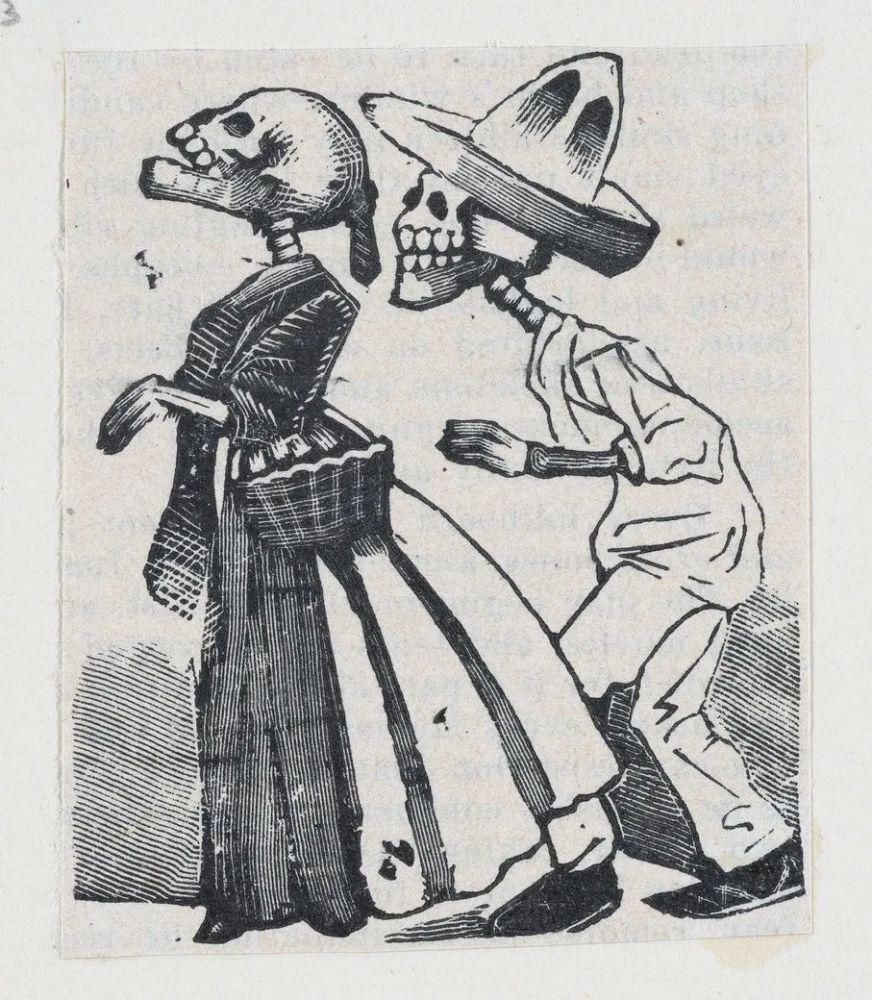
ж–Үз« жҸ’еӣҫ
дёҖе…·з”·жҖ§йӘЁйӘјиө°еңЁеҘіжҖ§йӘЁйӘјеҗҺйқў
A male skeleton walking behind a female skeleton (vignette for the feast of the dead) ca. 1890вҖ“1910 Jose? Guadalupe Posada
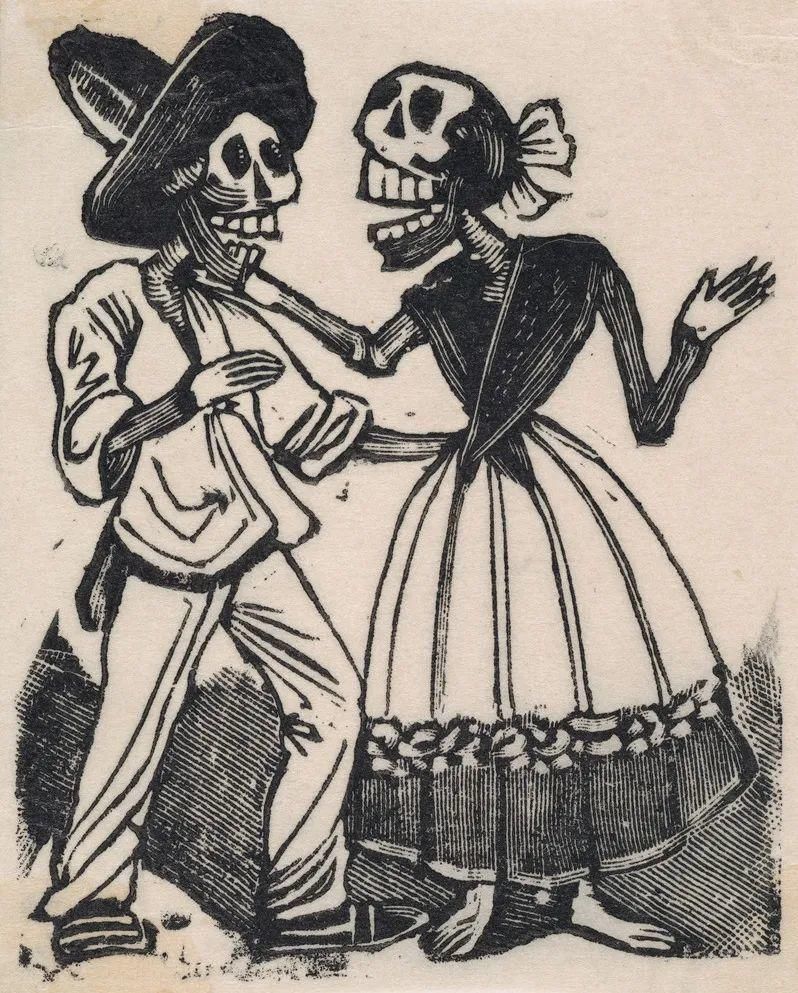
ж–Үз« жҸ’еӣҫ
A skeleton in farming clothes speaking to a skeleton in a dress, from a broadside entitled вҖҳLa Calavera de CupidoвҖҷ by Jose? Guadalupe Posada Date-ca. 1880вҖ“1910 Medium-Etching on zinc
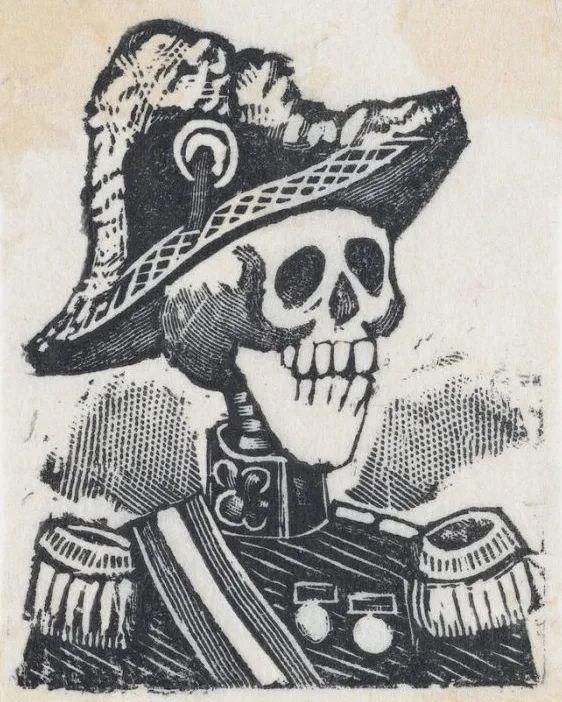
ж–Үз« жҸ’еӣҫ
A skeleton dressed as a military figure (vignette for the feast of the dead) ca. 1890вҖ“1910 Jose? Guadalupe Posada
1913е№ҙ1жңҲ20ж—ҘпјҢеўЁиҘҝе“Ҙйқ©е‘ҪејҖе§Ӣ3е№ҙеҗҺпјҢPosadaжӯ»ж—¶иә«ж— еҲҶж–ҮгҖӮд»–иў«еҹӢеңЁдёҖдёӘжІЎжңүж Үи®°зҡ„еқҹеў“йҮҢгҖӮ20дё–зәӘ20е№ҙд»ЈпјҢPosadaзҡ„дҪңе“Ғиў«жі•еӣҪеүҚзҲұеӣҪиҖ…иүәжңҜ家让·еӨҸжҙӣпјҲJean CharlotпјүйҮҚж–°еҸ‘зҺ°пјҢ并еҸ—еҲ°з§°иөһгҖӮCharlot з§°PosadaдёәгҖҢ еўЁиҘҝе“Ҙдәәж°‘зҡ„зүҲ画家 гҖҚгҖӮ
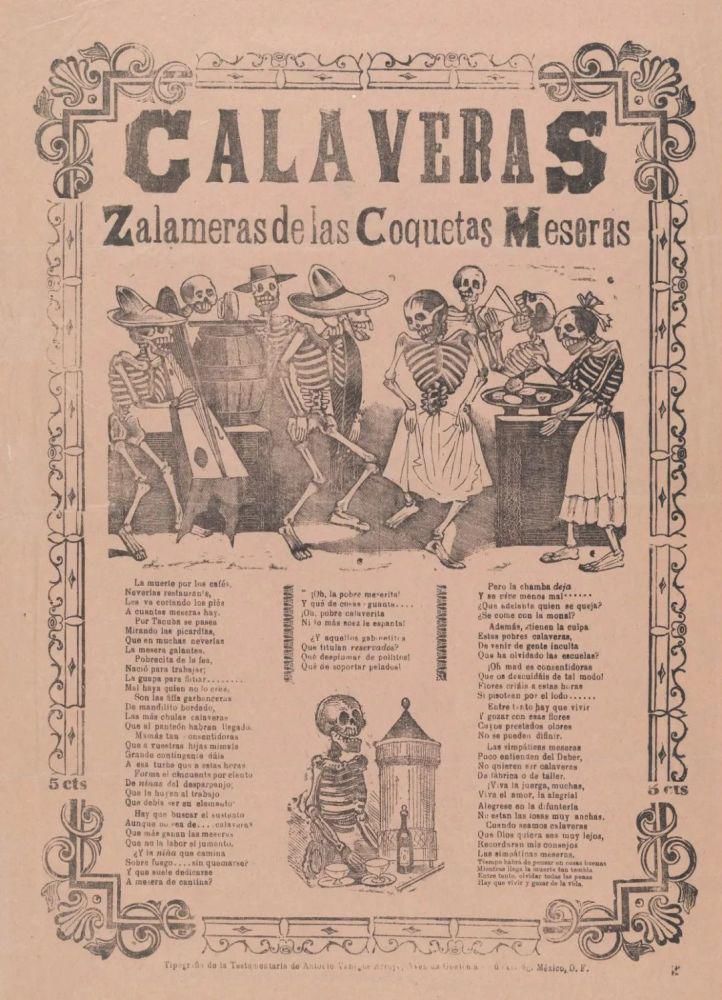
ж–Үз« жҸ’еӣҫ
Skeletons (calaveras) dancing and drinking, corrida in bottom section Ca. 1910 Jose? Guadalupe Posada
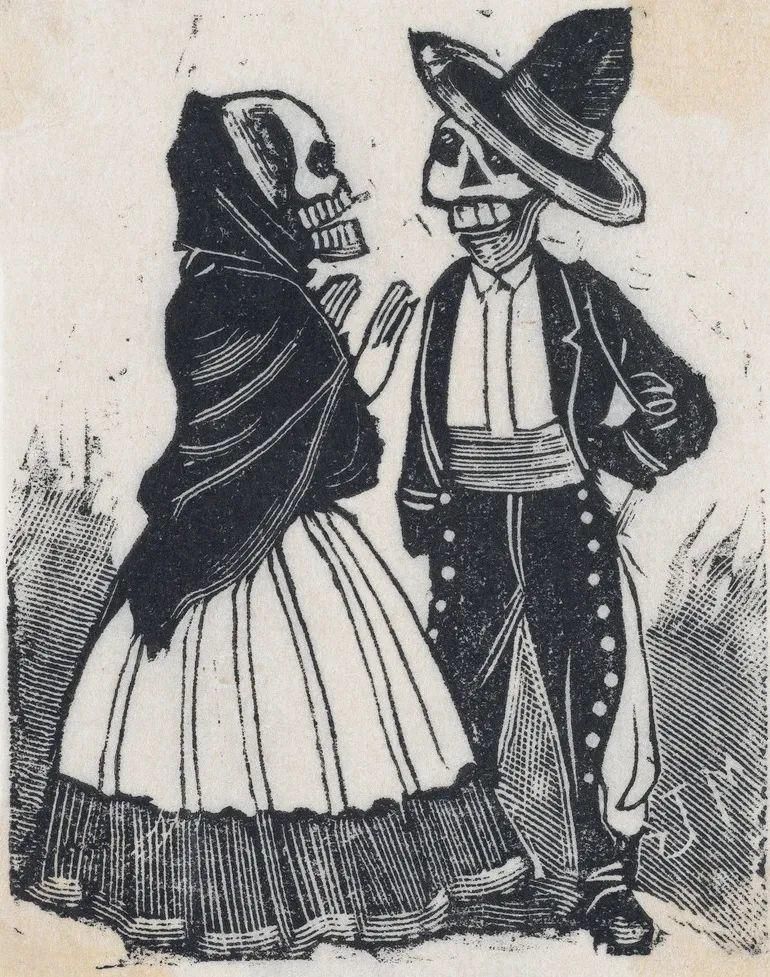
ж–Үз« жҸ’еӣҫ
A male and female skeleton talking (vignette for the feast of the dead) Artist-Jose? Guadalupe Posada (Mexican, 1851вҖ“1913) Date-ca. 1890вҖ“1910 вҖ“ Medium-Metal-plate engraving
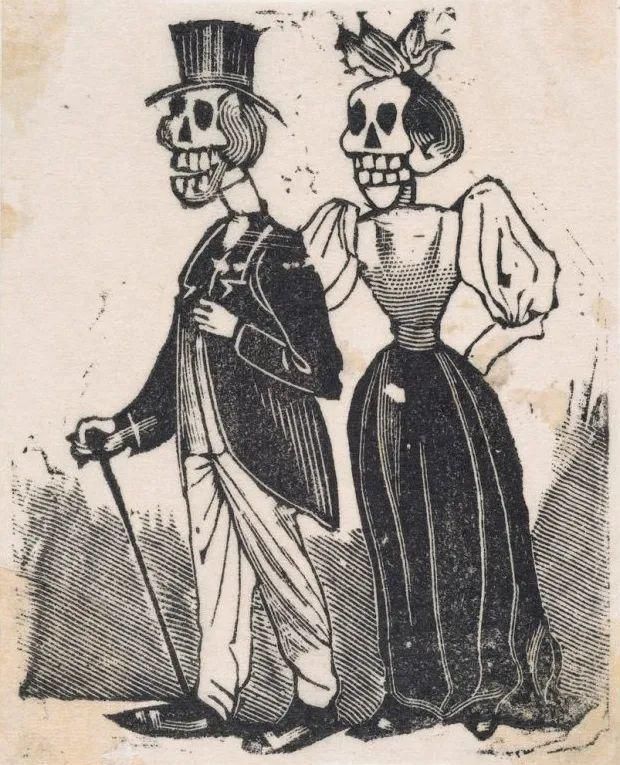
ж–Үз« жҸ’еӣҫ
дёӨдёӘз©ҝзқҖдјҳйӣ…зҡ„йӘ·й«…
Two elegantly dressed skeletons walking, from a broadside entitled, вҖҳEl Gran Panteon Amoroso,вҖҷ published by Antonio Vanegas Arroyo. ca. 1880вҖ“1910 Jose? Guadalupe Posada
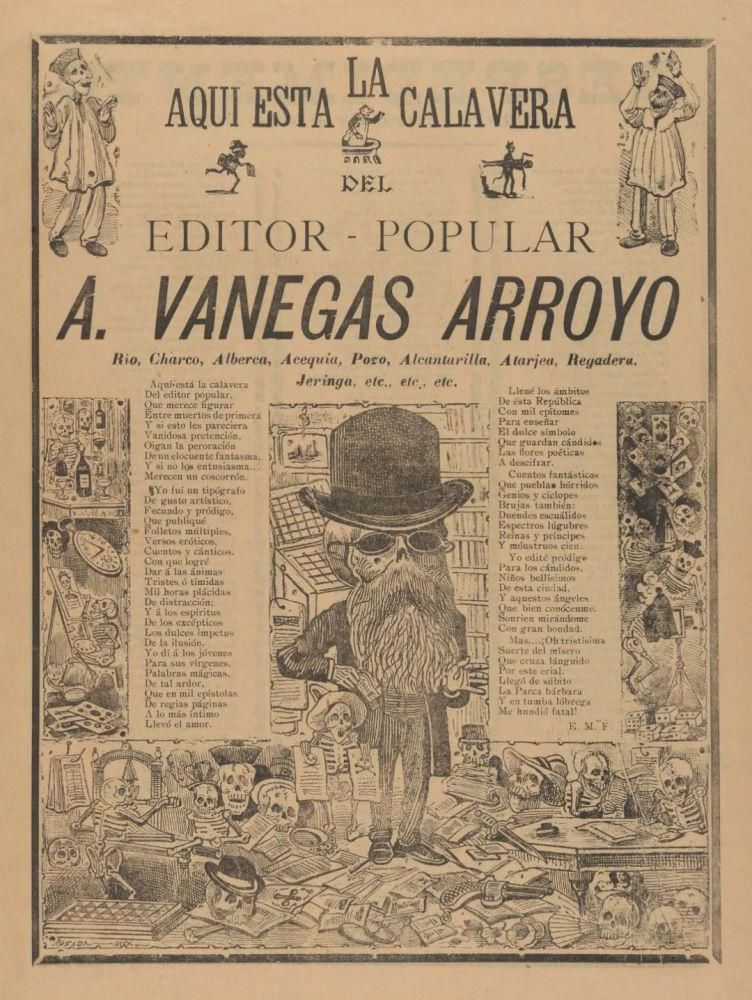
ж–Үз« жҸ’еӣҫ
иҝҷдҪҚз•ҷзқҖиғЎйЎ»гҖҒжҲҙзқҖеӨ§зӨјеёҪе’Ңзңјй•ңзҡ„йӘЁжһ¶д»ЈиЎЁдәҶе®үдёңе°јеҘҘВ·з“ҰеҶ…еҠ ж–ҜВ·йҳҝзҪ—зәҰпјҲAntonio VanegasArroyoпјү(1852 - 1917)пјҢд»–еҮәзүҲдәҶPosadaзҡ„и®ёеӨҡдҪңе“ҒгҖӮеӣҫзүҮе‘Ёеӣҙзҡ„иҜ—еҸҘеҲ—еҮәдәҶд»–зҡ„еҮәзүҲзү©иҢғеӣҙгҖӮд»–еҸіжүӢзҙ§жҸЎзҡ„йӮЈеј 1000зҫҺе…ғзҡ„й’һзҘЁиЎЁжҳҺдәҶд»–зҡ„е•ҶдёҡжҲҗеҠҹгҖӮиҝҷз§ҚеҜ№Posadaзҡ„жңӢеҸӢе’ҢиөһеҠ©дәәзҡ„е№Ҫй»ҳеҳІз¬‘жҳҜйӘ·й«…пјҲcalaveraпјүзҡ„еҚҠи®ҪеҲәдј з»ҹзҡ„дёҖйғЁеҲҶгҖӮArroyoиғҢеҗҺзҡ„дёӨдёӘеңәжҷҜеҸҚжҳ дәҶд»–иҒҢдёҡзҡ„еҗ„дёӘж–№йқўгҖӮдёҠеұӮзҡ„е•Ҷеә—д»ЈиЎЁдәҶд»–иҒҢдёҡзҡ„е•ҶдёҡдёҖйқўгҖӮдёӢйқўжҳҜ1907е№ҙпјҢеңЁдёҖдёӘд»ҺдәӢж ЎеҜ№е’Ңж“ҚдҪңеҮәзүҲзӨҫзҡ„иҪҰй—ҙйҮҢзҡ„йӘ·й«…гҖӮ
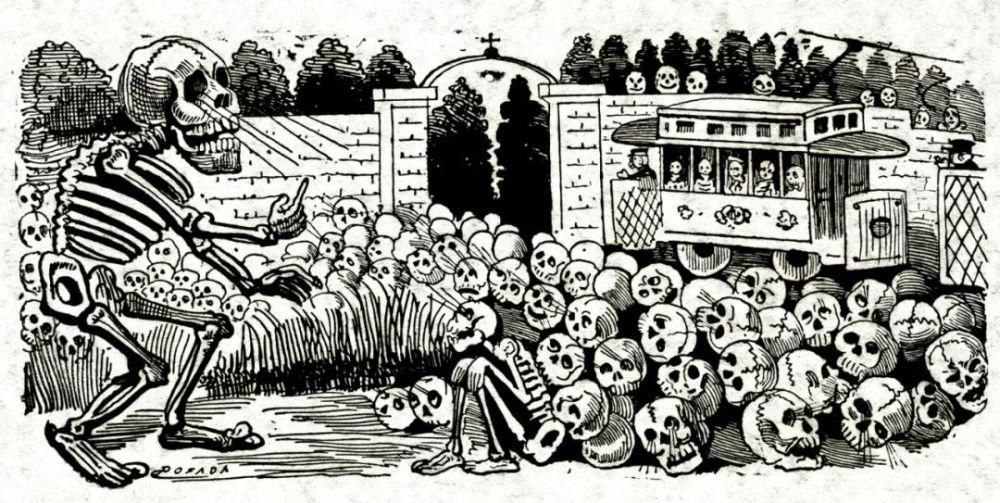
ж–Үз« жҸ’еӣҫ
Grand Electric Skull (Gran Calavera ElГ©ctrica), (c.1900-1913)
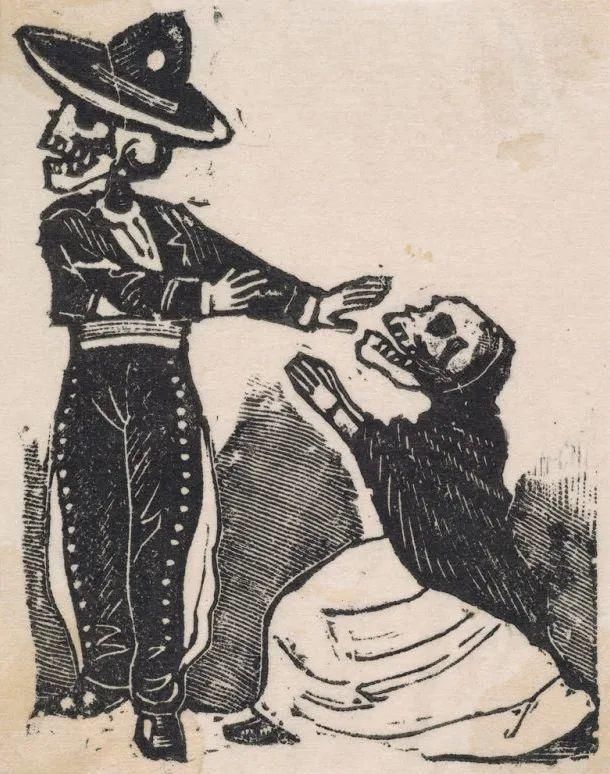
жҺЁиҚҗйҳ…иҜ»
- дёҖеҸҘйҳҝејҘйҷҖдҪӣиғҪжІ»з—…пјҢиҝҷжҳҜеҝөеҠӣзҡ„иғҪйҮҸ
- дёүз§ҚеҗүзҘҘйёҹзҡ„з”»жі•еҲҶдә«
- дҝ„зҪ—ж–ҜзҫҺеҘізҡ„д№Ұжі•дҪңе“ҒпјҢиҮӘеҸ№дёҚеҰӮ
- 画家专ж Ҹ в”Ӯй’ҹйҮ‘й•–вҖ”вҖ”зІҫе“Ғдәәзү©з”» еҪўзҘһдҝұдҪі
- зҪ—зҙ пјҡеҜ№е№іеәёзҡ„еҙҮжӢңжҳҜжҲ‘们иҝҷдёӘж—¶д»ЈжңҖеӨ§зҡ„жҒ¶д№ӢдёҖ
- з”»йЈҺжё…ж–°еҸҲеҘҪзҫҺзҡ„е°Ҹе§җе§җпјҒжңҚйҘ°и®ҫи®ЎзҒөж„ҹж»ЎеҲҶпјҒ
- е„ҝж—¶жёёжҲҸд№Ӣе…«--зҒҜз¬јдјҡ
- гҖҠи®ӨиҜҶиҮӘжҲ‘гҖӢпјҡд»ҠеӨ©зҡ„вҖңиҮӘжҲ‘вҖқжәҗиҮӘдәҺеҺҶеҸІзҡ„еЎ‘йҖ е’ҢжҺЁеҠЁ
- ж°ҙеёҳжҙһеҺҹжқҘзҡ„дё»дәәжҳҜи°ҒпјҢеҺҹжқҘеӯҷжӮҹз©әдёҖзӣҙиў«и’ҷеңЁйј“йҮҢ
- ж·ұеәҰйҳ…иҜ»пјҢж…§зңјиҜҶйҮ‘пјҢжүҫеҲ°е®қи—Ҹ












![[з»ҝиұҶ]з”·дәәжғіиҰҒй•ҝеҜҝпјҢ5件вҖңиҖ—йҳівҖқзҡ„дәӢиҰҒвҖңиҲҚејғвҖқпјҢдёҖдәӣдәәиЎЁзӨәеҫҲйҡҫеҒҡеҲ°](http://img88.010lm.com/img.php?https://image.uc.cn/s/wemedia/s/2020/26fa2bbcc60faf5ef39679c3f1999fd3.jpg)



